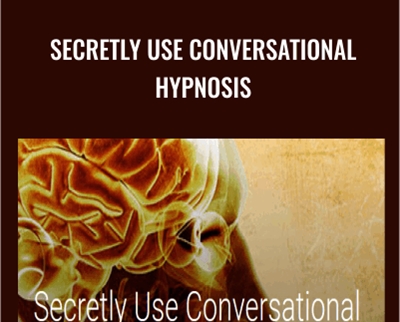New Rules for Treating Trauma: Integrating Neuroscience for Resilience, Connection and Post-Traumatic Growth – Courtney Armstrong
$199.99 Original price was: $199.99.$55.00Current price is: $55.00.
New Rules for Treating Trauma: Integrating Neuroscience for Resilience, Connection and Post-Traumatic Growth – Courtney Armstrong Download. Memory reconsol…
Salepage link: At HERE. Archive:
Were you taught to use medication, CBT, exposure and other traditional therapy approaches to treat trauma? Did you know that these approaches can be limited when it comes to healing trauma at the deeper, emotional level of the brain?
Memory reconsolidation is a recent neuroscience breakthrough that revealed a new way to clear trauma at its roots by process of recalling and updating a memory.
During this recording, I’ll provide you with step-by-step instructions and techniques you can use in each phase of trauma treatment. This is the trauma training that specifically gives you skills in the phenomena of memory reconsolidation. Let me show you why memory reconsolidation is necessary for transforming your trauma work with clients. I will give you a simple protocol to use to reconsolidate a traumatic memory in as little as one session!
Don’t get the impression that you have to get lengthy, expensive training and certification in certain modalities in order to be able to successfully treat trauma. This recording will let you walk away knowing exactly what to do to help your clients reclaim their lives after trauma!
Courtney Armstrong, LPC, MHSP
- Summarize how a clients’ emotional trauma is processed in the brain as it relates to case conceptualization.
- Analyze why the use of clinical exposure techniques alone are not enough to relieve post-traumatic stress symptoms.
- Breakdown the three phases of trauma-informed treatment put to practical use in-session.
- Compile recent neuroscience discoveries regarding memory reconsolidation and its clinical implications for treating trauma.
- Characterize the five steps that several evidence-based trauma therapies have in common.
- Utilize two experiential techniques that can be used to resource, uplift, and empower clients to reduce feelings of shame and helplessness.
- Apply two interventions you can use to help clients reconnect to a healthy sense of self, relationships, and the world.
The Emotional Brain: A User-Friendly Guide
- Simple ways to understand the brain
- A healthy emotional brain & how it develops
- 7 primary emotional systems
- How trauma and disrupted attachment alter the brain
- 3 neuroscience breakthroughs that change how we treat trauma
- Resilience, connection and post-traumatic growth
The 3-Phase Model of Trauma- Informed Treatment
Interventions for Assessment, Safety and Stabilization
- 5 simple questions to assess for PTSD
- Beyond words: build trust and safety with right brain to right brain communication
- Help clients understand trauma responses
- Calm fear with mindfulness and imagery techniques
- Deal with dissociation: practical tools for grounding and orienting
- Shift shame and nurture self-compassion
- Defuse anger with play and humor
- Empower with movement and metaphor
Reprocessing Traumatic Memories: A Less Painful Approach
- Revise not relive: why exposure can retraumatize
- Memory reconsolidation: a mechanism for healing trauma
- 5 simple steps for reconsolidating a traumatic memory
- Create the future-self template and the brain’s blueprint for healing
- Neutralize negative beliefs with resourceful emotional states
- Facilitate corrective emotional experiences with powerful imagery, metaphor, music and movement techniques
Facilitating Post-Traumatic Growth
- The 3 qualities of post-traumatic growth
- Create a positive post-trauma identity
- Nurture a secure attachment system after trauma
- Find meaning and purpose after trauma
- Happiness and the power of intention
Applications for Special Populations
- Sexual trauma survivors
- Childhood abuse and neglect
- Traumatic grief after sudden or violent deaths
- Medical trauma, car accidents and disasters
- Military, police and first responders
- Children and adolescents after trauma
- Cultures and faith traditions
- Prevent burnout and vicarious trauma
Here's an overview of the prominent keywords and a list of famous authors:
Business and Sales: Explore business strategies, sales skills, entrepreneurship, and brand-building from authors like Joe Wicks, Jillian Michaels, and Tony Horton.
Sports and Fitness: Enhance athleticism, improve health and fitness with guidance from experts like Shaun T, Kayla Itsines, and Yoga with Adriene.
Personal Development: Develop communication skills, time management, creative thinking, and enhance self-awareness from authors like Gretchen Rubin, Simon Sinek, and Marie Kondo.
Technology and Coding: Learn about artificial intelligence, data analytics, programming, and blockchain technology from thought leaders like Neil deGrasse Tyson, Amy Cuddy, and Malcolm Gladwell.
Lifestyle and Wellness: Discover courses on holistic health, yoga, and healthy living from authors like Elizabeth Gilbert, Bill Nye, and Tracy Anderson.
Art and Creativity: Explore the world of art, creativity, and painting with guidance from renowned artists like Bob Ross and others.
All the courses on WSOlib are led by top authors and experts in their respective fields. Rest assured that the knowledge and skills you acquire are reliable and highly applicable.
Specification: New Rules for Treating Trauma: Integrating Neuroscience for Resilience, Connection and Post-Traumatic Growth – Courtney Armstrong
|
User Reviews
Only logged in customers who have purchased this product may leave a review.
$199.99 Original price was: $199.99.$55.00Current price is: $55.00.
Related Products

Self Mastery Super Charger Self Hypnosis Study Course – David Snyder

Secretly Use Conversational Hypnosis – Scott Jansen

Self Mastery GB Bonus Books – David Snyder

Science of Influence V – Kevin Hogan

Secrets of Inner Power 2.0 – T. Harv Eker

$199.99 Original price was: $199.99.$55.00Current price is: $55.00.







There are no reviews yet.